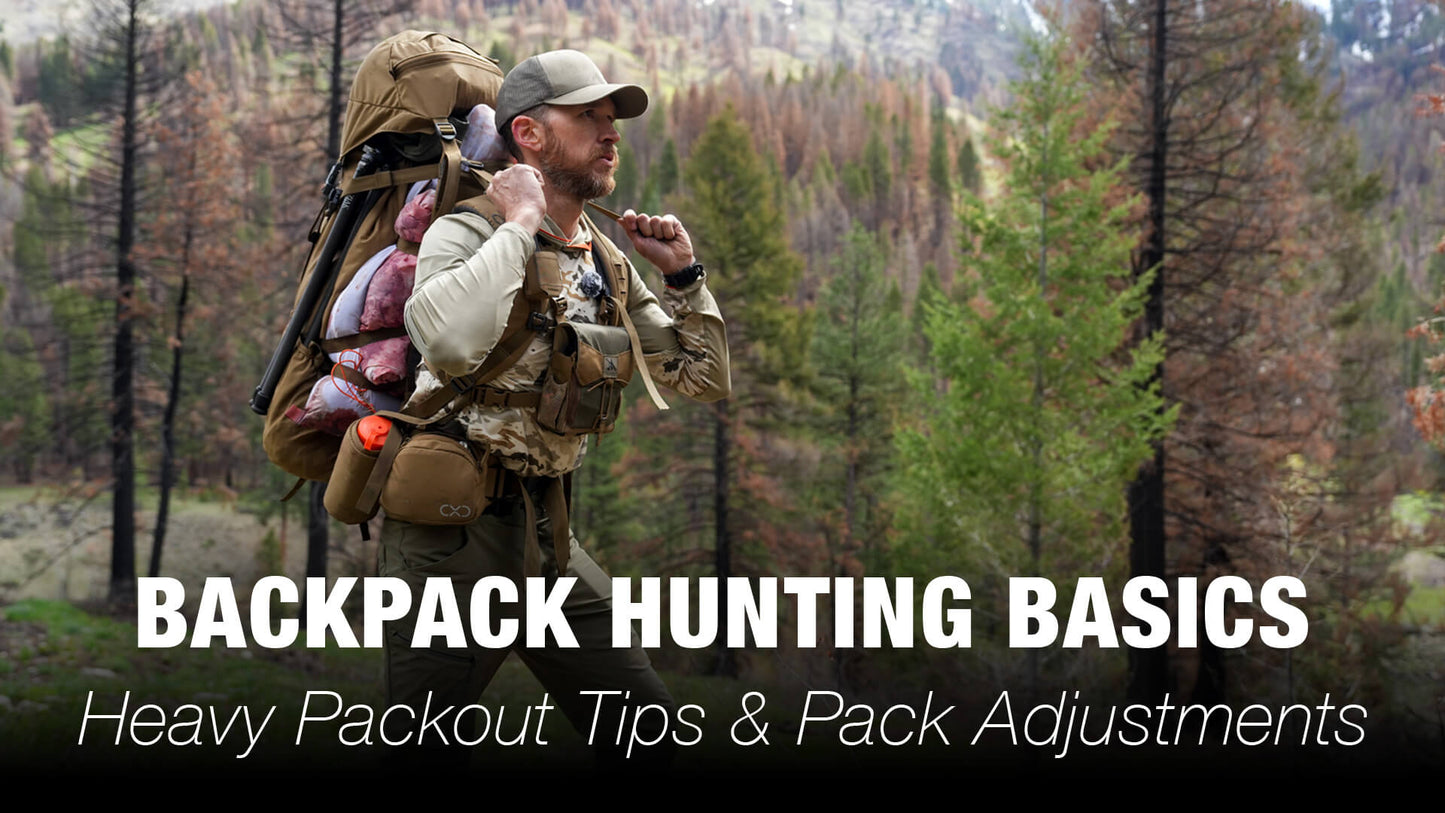
Packing out an animal may be heavy, but it should never be painful. After covering what to do when you shoot an animal, what to do when you recover an animal, and how to put on a heavy pack, we now want to share some tips that can help you during a heavy packout...
FITTED & LOADED
A heavy pack that is not fitted well and loaded properly will never feel good. So if you want any chance of hiking heavy in comfort, be sure you have the pack adjusted to you properly, that your gear in the bag is loaded well, and that any meat, hide, antlers or horns are loaded and secured well.
GIVE ME A BREAK
On a heavy packout over many miles, taking small breaks will bring big benefits. Just a few minutes of “taking the load off” will keep you feeling fresher and ready to continue the heavy hike.

Justin from Exo Mtn Gear "takes the load off" during a quick break on a heavy packout.
During quick breaks, look for trees, rocks, or other natural features that allow you to rest the weight of the heavy pack on something other than your body. Or for longer packouts and longer breaks, take the pack off completely if you need to rest.
HELP YOUR HIPS
A well-designed, well-fitting pack frame will transfer the majority of the weight to your hips, and keep the weight off of your shoulders.
Since the hipbelt is under tension and bearing much of the load, be sure that you have the hipbelt positioned properly (over the iliac crest), and that you minimize any bulk between the pack hipbelt and your body.
The bulk of a belt, suspenders, or just the bunching of fabric (from your shirt or pants) can create pressure or abrasion that leads to discomfort. Pants with a built-in belt, such as the Altura Dynamic Pants from Outdoor Vitals, are ideal. If you have to use an external belt, choose something thin and soft, like this Arcade Belt.
Some guys with pronounced hip bones may struggle with pressure or abrasion, no matter what they do. If you are one of those, try placing some Leukotape over the hip during long, heavy packouts.
SHIFT THE TENSION
Small changes in tension and load distribution can have a big impact during long, heavy packouts. Slightly decreasing load-lifter tension, then increasing shoulder harness tension (and vice versa) will change the load-distribution, giving one area of your body some reprieve while another area of your body carries more of the load.
When you have a lot of load-lifter tension, you will feel more pressure on the front of the chest. And when you have a lot of shoulder harness tension, you will feel more pressure pushing down on top of the shoulders.
If you are experiencing consistent fatigue or pressure in the shoulders or upper back, it may not be the pack at all. Many bino harnesses create pressure and fatigue under a heavy pack, so if you do not need to wear your bino harness during a heavy packout, consider taking it off and putting your binos inside your pack.
HYDRATION, NUTRITION, & INFLAMATION

With the K4 Nalgene Holder and K4 Hipbelt Pouch, Mark has hydration and nutrition readily accessible during a heavy packout
Heavy packouts are demanding on the body, so be sure to eat and drink during the packout. Keep your food and water accessible during the packout — enabling you to eat or drink while on the move or during those quick micro-breaks we discussed.
During a heavy packout, we fill our Nalgene bottle with electrolytes and keep it accessible in our K4 Nalgene Holder, and we have some snacks handy in our K4 Hipbelt Pouch.
To help with inflammation, consider taking some Ibuprofen, or applying Voltaren to areas of the body that bother you during these demanding efforts.
We hope these tips help you on your next packout!
